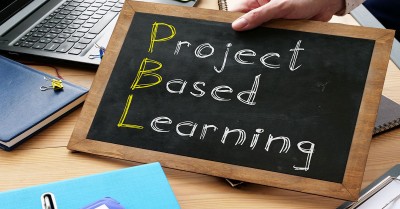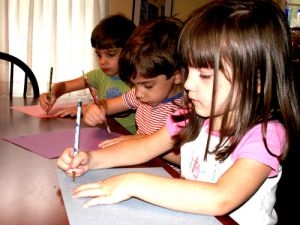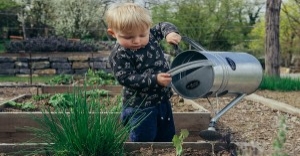Project-based learning is an educational approach in which students acquire knowledge and skills by working for an extended time on a project or task. The following article provides information on What Is Project Based Learning, the Key Elements of Project Based Learning and the fundamentals of project-based learning and how you can use it in the learning environment.
What Is Project-Based Learning?
As part of the project-based learning approach, children spend a significant amount of time investigating and addressing a complex question, problem or challenge in order to build knowledge and skills. This learning strategy is centred around a focus topic or problem that kids collaborate to answer, as the name implies.
The Key Elements of Project-Based Learning
- A challenging or complex problem or question
- A sustained inquiry process
- Student voice and choice throughout, from the conception of the inquiry to the finished product
- The integration of multiple learning areas
- The application of learning to real-life situations
- Authenticity
- A critical reflection process or feedback loop, which involves students’ critical assessment, reflection and refinement of their project and learning
- The production of a developmentally appropriate, polished product for a public audience
- Collaboration and teamwork to achieve the shared goal of discovering and acquiring new knowledge
Strategies To Incorporate Project-Based Learning
- Keep It Real
One of the fundamental principles of project-based learning is that it should be directly integrated with the learners’ actual surroundings and not refer to a hypothetical situation. So a recycling or ‘growing your own veggies’ project would be a great way to teach scientific concepts such as plant growth, soil, and climate as well as explore sensory learning and numeracy. Also, make sure that the project draws on their children’s personal interests or explores issues close to their hearts. Indeed such projects may also emerge from chance discussions or class questions and then evolve into full-fledged investigations, integrating various learning goals.
- Set The Stage
Though the exact steps of project-based learning would vary by subject and age group of the children, essentially it starts with a preparatory stage. During this stage, a teacher introduces the basics of the project including the context, line of enquiry, group members, materials to be used, methods of documentation and if applicable, the time frame. During this stage, the teacher might also put forward a model of the task to give learners an understanding of what they will be working on. Like if your class has taken up a kitchen garden project, you might take them to an organic vegetable farm.
- Prepare The Skills
The next broad stage involves the teacher modelling the skills needed for the project and then offering guided practice for the learners. So at this stage, you might teach children the basics of preparing the soil, planting the seeds and watering while using the opportunity to introduce related science concepts like different types of soil and germination.
- Performance Time
After task preparation and rehearsal, it is finally time for your learners to get their hands dirty! Continuing with the example, this stage would involve children carrying out the gardening activities, regular monitoring of plant germination, and growth and necessary documentation. While the task is learner-led, make sure you are around if they get stuck or need a helping hand.
- Follow Up
The purpose of a follow-up is to reflect on the learning that happened over the course of the project and to extend the learning in other directions – for example, to numeracy activities like weights and measures or literacy activities like process-writing or making maps. The best part about such projects in the early childhood context is that they are open-ended without any explicit measuring of goals achieved. Since there are no right or wrong answers, learners have all the space to explore their skills and creativity, without fear of failure.
The main advantages of the Project learning approach is that it facilitates learning by doing, is grounded in the practical application of concepts and can be used across age groups and subjects.
Further Reading
Inquiry-Based Learning Questions Posters - The Inquiry-Based Learning Questions Posters are a great way to get children thinking on their own terms and without any barriers. These types of questions allow the adults in a child's life to gather information in order to better guide the child. These can be used as a display to remind Educators of inquiry-based learning questions to ask children.
Inquiry-Based Learning For Toddlers - Asking questions is an important aspect of an inquiry-based approach but toddlers and very young children may not have the language to frame and ask such questions. Here are then a few tips on planning inquiry-based experiences for toddlers.
How To Start A Project Posters - The How To Start A Project Posters are to be used by Educators to show the steps involved in starting a project with children. This will help guide Educators in how to start and implement a project with children.
Reference:
The Benefits of Project-Based Learning for Children, Choklists Child Care
Project-Based Learning For Preschool Students, Study Academy







 As an Educator in Australia, your pay rate falls under the Children’s Services Award 2010. This award states the minimum amount that an employer can
As an Educator in Australia, your pay rate falls under the Children’s Services Award 2010. This award states the minimum amount that an employer can Writing a personal philosophy is a great way for others to read what your values and beliefs are in regard to early childhood education. The
Writing a personal philosophy is a great way for others to read what your values and beliefs are in regard to early childhood education. The When going for a job interview the most nerve-wracking part of it, is answering those questions that may be asked. The following article provides a
When going for a job interview the most nerve-wracking part of it, is answering those questions that may be asked. The following article provides a Sometimes you know that it’s time to move on from your current centre. You may have found another centre to work with, your circumstances may
Sometimes you know that it’s time to move on from your current centre. You may have found another centre to work with, your circumstances may The “Preschool Room” is final step for you, as a childcare professional, to prepare your group of children and their families for school and making
The “Preschool Room” is final step for you, as a childcare professional, to prepare your group of children and their families for school and making Progressive mealtimes are giving an opportunity for children to choose when they want to eat within a certain timeframe instead of eating at a set
Progressive mealtimes are giving an opportunity for children to choose when they want to eat within a certain timeframe instead of eating at a set Celebrating children's birthdays is important to the child and their families. It's a special occasion that focuses on the individual child and celebrates the day
Celebrating children's birthdays is important to the child and their families. It's a special occasion that focuses on the individual child and celebrates the day When Parents are sending food from home, it's important that they understand they need to bring snacks and pack a lunch that is healthy and
When Parents are sending food from home, it's important that they understand they need to bring snacks and pack a lunch that is healthy and The NQS mandates services to take an active role in caring for the environment and contributing to a sustainable future. According to NQS Standard 3.3,
The NQS mandates services to take an active role in caring for the environment and contributing to a sustainable future. According to NQS Standard 3.3, One of the best ways to encourage children to grow a garden to develop a range of skills is to create an edible garden. An
One of the best ways to encourage children to grow a garden to develop a range of skills is to create an edible garden. An


